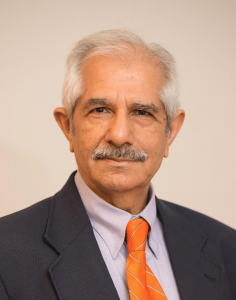Clemson University professor sees solar-energy revolution on the horizon
September 4, 2014Dr. Rajendra Singh calls for new business model and policy changes
CLEMSON, SC – A Clemson University professor will tell a group of experts gathered in Bangladesh on Friday that solar panels will soon revolutionize energy production the same way computer chips brought about the information revolution.
Dr. Rajendra Singh will give the keynote address at the 2nd International Conference on Green Energy and Technology in Bangladesh’s capital, Dhaka.
He said in an interview before the speech that solar energy will lower air pollution and greenhouse gases, while stimulating struggling economies and empowering impoverished people around the globe.
About 1.5 billion people worldwide lack access to electricity and another 1 billion have intermittent access. Providing basic education, healthcare and life skills all depend on electricity, Singh said.
He is calling for new monetary policies and business models to hasten the spread of solar power.
Key to his approach is moving away from the century-long practice of generating alternating current (AC) power at centralized plants and then distributing it through massive grids.
Instead, he envisions a future in which a growing number of solar-powered “microgrids” and “nanogrids” operate like mini-utilities that distribute direct-current (DC) power to a limited area, such as a single town.
“The world is about to witness transformational changes in electricity infrastructures,” Singh said. “Emerging and underdeveloped economies that now lack these infrastructures will be able to leapfrog a century of electrical progress in developed countries.”
Singh was recently honored by the White House as one of 10 “Champions of Change” for solar deployment. He is Clemson’s D. Houser Banks Professor of Electrical and Computer Engineering.
Part of the challenge in electrifying the globe is figuring out how to get power to rural towns and villages that are disconnected from the main grids that serve most of the developed world.
For Singh, the solution is to create solar-powered microgrids and nanogrids. Microgrids cover a small area, such as a single town, while nanogrids are small microgrids that distribute power to an even more limited area, such as a village of a few homes.
One advantage of microgrids and nanogrids is they can use DC power, which is more efficient than AC power, Singh said.
DC power runs the most commonly used electrical products, including cell phones, laptops, lights, home appliances and air conditioners. If the power feeding into a home or business is already DC, no conversion is needed.
But when AC power flows to the electrical outlet, it has to be converted to DC power.
About 70 percent of AC electricity is lost in generation, transmission and distribution, Singh said. The global annual cost of energy loss is estimated at about $4.1 trillion, he said.
“A significant part of this energy loss is due to the use of AC power transmission and distribution to service mostly DC loads,” Singh said.
DC power also helps reduce hardware costs for microgrids and nanogrids, he said. Inverters are no longer needed, he said. The cost of batteries and capacitors, which store DC electricity, is also reduced, Singh said.
Some DC-based nanogrids are already operating in villages of north India situated at more than 14,000 feet above sea level.
Singh also sees the potential for solar power to transform transportation, which could lower greenhouse gas emissions that have been linked to climate change.
Solar panels can be used to provide energy to charging stations for electric vehicles. The panels could also be mounted directly on the vehicles.
It’s already happening in some parts of the world.
Three-wheel vehicles now popular in India can go more than 60 miles on less than $1 when powered by onboard solar panels and a battery, Singh said. It costs $4 to run the same vehicle on diesel, he said.
Singh also sees solar power and related technology as a low-cost way of meeting the world’s growing demand for water. Nearly 800 million people have no access to clean water, he said.
Solar power is particularly interesting for small-scale desalination plants that are not connected to any electrical grid, Singh said.
“This technology is highly attractive to provide clean water in areas that lack water-distribution infrastructure,” he said.
Singh is calling for a “paradigm shift” to more quickly address the electricity needs of those who need it most– more than 20 percent of the world’s population.
“While governments and nonprofits have often viewed these 1.5 billion people as underprivileged, they can be seen as an untapped market of potential customers that can stimulate struggling economies,” he said.
The infrastructure needed for such a large change will require ultrahigh volume manufacturing of solar-panel modules and other components of photovoltaic system and batteries, Singh said.
He called on policymakers to adopt a policy of “quantitative easing” that brings down interest rates.
Singh also wants to see “virtual vertical integration,” a business model that allows for better control of costs, quality and delivery times. It would involve coordination of solar-panel manufacturers, financiers and utility companies, he said.
The speech he will give at the conference will be based on a paper, “Emerging Role of Photovoltaics for Sustainably Powering Underdeveloped, Emerging, and Developed Economies.”
His co-authors include five from Clemson: Amir A. Asif, Ganesh K. Venayagamoorthy, Mahmoud Abelhamid, Githin F. Alapatt, and David A. Ladner. One co-author, Akhlesh Lakhtakia, is from Pennsylvania State University.
The conference is sponsored by the Power and Energy Systems Society of by the Institute of Electrical and Electronics Engineers (IEEE).

















